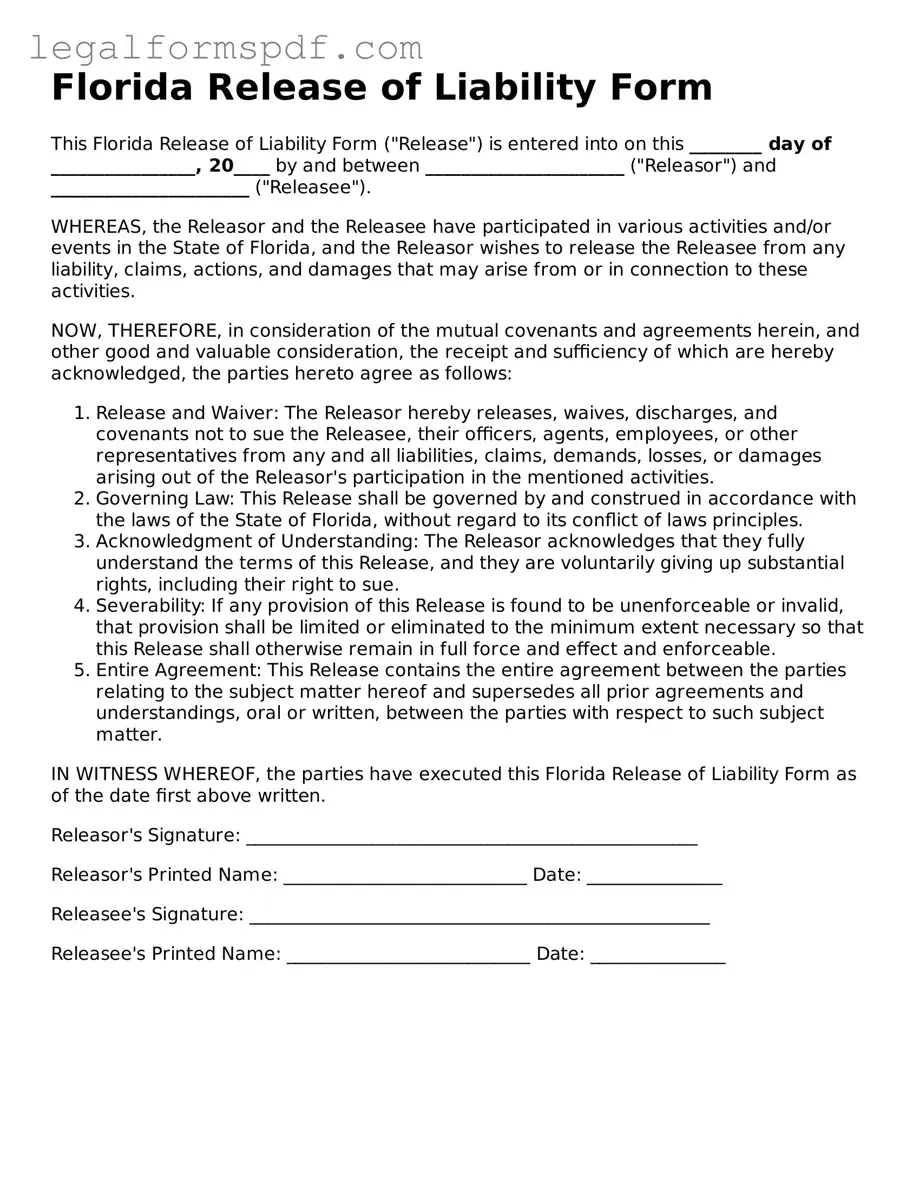What is a Florida Release of Liability Form?
A Florida Release of Liability Form is a legal document that releases a party from liability in the event of an accident or other incident causing injuries or damages. This form is commonly used in situations where risk is involved, such as sports events, recreational activities, or in the sale of goods and services, to protect the party providing the service or activity from lawsuits.
When should one use a Florida Release of Liability Form?
One should use a Florida Release of Liability Form when organizing events or activities that carry a risk of injury or damage, or when selling goods and services that may potentially lead to disputes about injuries or damages. It helps in clearly communicating the risks involved to all parties and securing an agreement to not hold the provider liable.
Is a Florida Release of Liability Form legally binding?
Yes, a Florida Release of Liability Form is legally binding if it is drafted correctly, clearly stating the risks involved, and voluntarily signed by the party assuming the risk. It must comply with Florida laws and cannot waive liability for intentional harm or gross negligence.
Can minors sign a Florida Release of Liability Form?
Minors cannot legally sign a Florida Release of Liability Form. A parent or legal guardian must sign it on their behalf for it to be considered valid. This ensures that the minor is adequately represented and understands the risks involved.
What information needs to be included in the form?
The form should include the names of all parties involved, a detailed description of the activity or service, the specific risks associated with it, and a clear statement of the release of liability. It should also have a signature line for the party assuming the risk, and if applicable, for the parent or guardian of a minor.
How can one ensure the form is legally enforceable?
To ensure the form is legally enforceable, it should be clearly written, without legal jargon that might confuse the parties. It must explicitly outline the risks and the agreement to release liability. Both parties should sign it voluntarily, without any duress or pressure. It's advisable to have a witness or notarize the form to increase its validity.
What are the limitations of a Florida Release of Liability Form?
The form cannot release a party from liability for intentional harm, gross negligence, or other actions that Florida law deems ineligible for such release. It also cannot prevent someone from suing, but it can provide a strong defense if the conditions of the release were clearly understood and agreed upon by all parties involved.
Can a signed Florida Release of Liability Form be revoked?
Once signed, a Florida Release of Liability Form typically cannot be revoked unilaterally. However, if it is proven that the form was signed under duress, with insufficient understanding, or with misinformation, it may be challenged in court.
How long does a Florida Release of Liability Form remain effective?
The duration for which a Florida Release of Liability Form remains effective varies depending on the activity or transaction it covers. It can be set for a specific period or for the duration of the participant's involvement in the activity. The terms should be clearly defined in the form itself.
